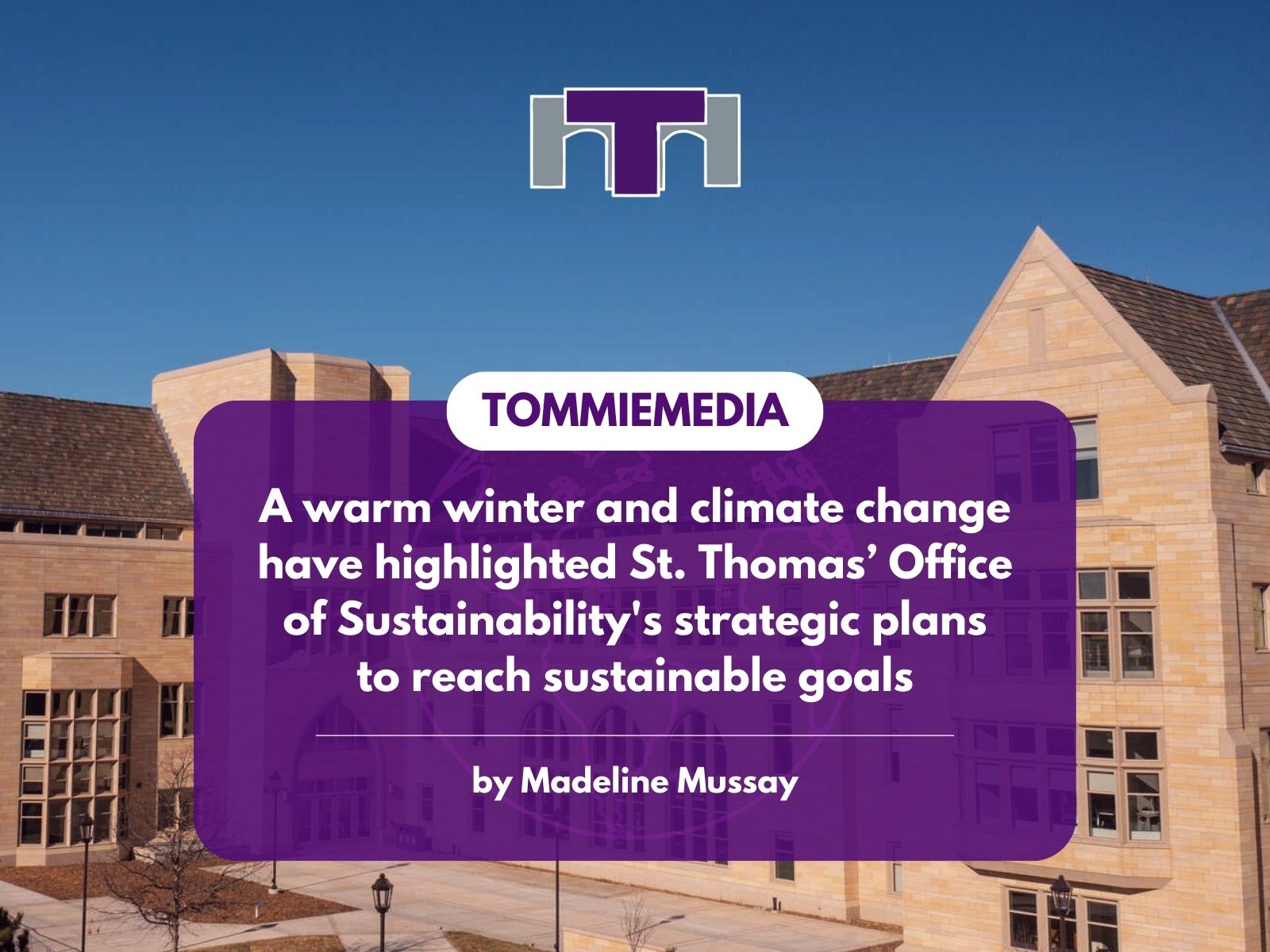
A warm winter and climate change have called attention to the Office of Sustainability’s strategic plans as St. Thomas works to reach sustainable goals.
This year’s warm winter was caused by a combination of climate change and El Niño, a naturally occurring phenomenon in which warm surface water in the central and eastern equatorial Pacific combines with wind to change weather worldwide.
“December (2023) through February (2024) is the warmest on record, and the problem with this record is that usually, previous records topple by a fraction of a degree, this time it topples by full degrees,” Earth, Environment and Society professor David Kelly said.
Last summer, the hot and dry climate caused wildfires. According to Kelly, Minnesota is experiencing these weather conditions again.
“99% of the state is in extreme dryness, 53% is in moderate drought, 12% is in severe drought,” Kelly said.
The hot and dry climate increases the possibility of wildfires. This concerns farmers as they need a certain amount of moisture from rainfall or snowpack to grow crops. Kelly said that extreme temperatures can mean more aggressive events, such as extreme hurricane and tornado seasons.
“All the ingredients are there for wildfires this summer, heating of the planet to warning levels. Unless we can act on this, it is going to be more of the same (climate),” Kelly said.
The Office of Sustainability at St. Thomas is taking action through two strategic plans, the university-wide 2025 Strategic Plan, to live and work sustainability, and the sustainability strategic plan, to work toward future sustainability goals.
To determine the progress of sustainability plans, Rachel Schauer, program manager for the Office of Sustainability, collects data points from other departments to compile the final report that is sent to the Board of Trustees every February.
The Sustainability Strategic Plan is coming up at the end of its 5-year-plan, while the university-wide strategic plan St. Thomas 2025 runs through 2025.
“We have to re-evaluate what is in the plan, is still relevant, what might have changed, are there programs that have gone away,” Schauer said.
St. Thomas has completed 84% of the “live and work” sustainably goal, from the most recent updates sent to the Board of Trustees. St. Thomas has achieved a Sustainability Tracking, Assessment and Rating Systems gold rating and reduced annual carbon emissions by 50%, on track to be carbon neutral by 2035.
The live and work sustainable goal is still working toward obtaining a minimum LEED silver certification for new buildings over 25,000 square feet and including sustainability components in at least 20% of undergraduate courses.
The university is also working toward a solid waste diversion of 70%, with waste sorting displays and signage — as well as zero-waste on-campus.
As for St. Thomas students, the Student Sustainability Leadership Program focuses on outreach and engaging students with the goal of creating a culture that prepares students to be sustainability leaders during their time at St. Thomas and the years after.
But Kelly said what happens locally doesn’t stay local and that the problem is bigger than what students are doing on campus.
“This is going to be an ongoing problem that your generation is going to have to adapt to,” Kelly said.
Madeline Mussay can be reached at muss3440@stthomas.edu.
